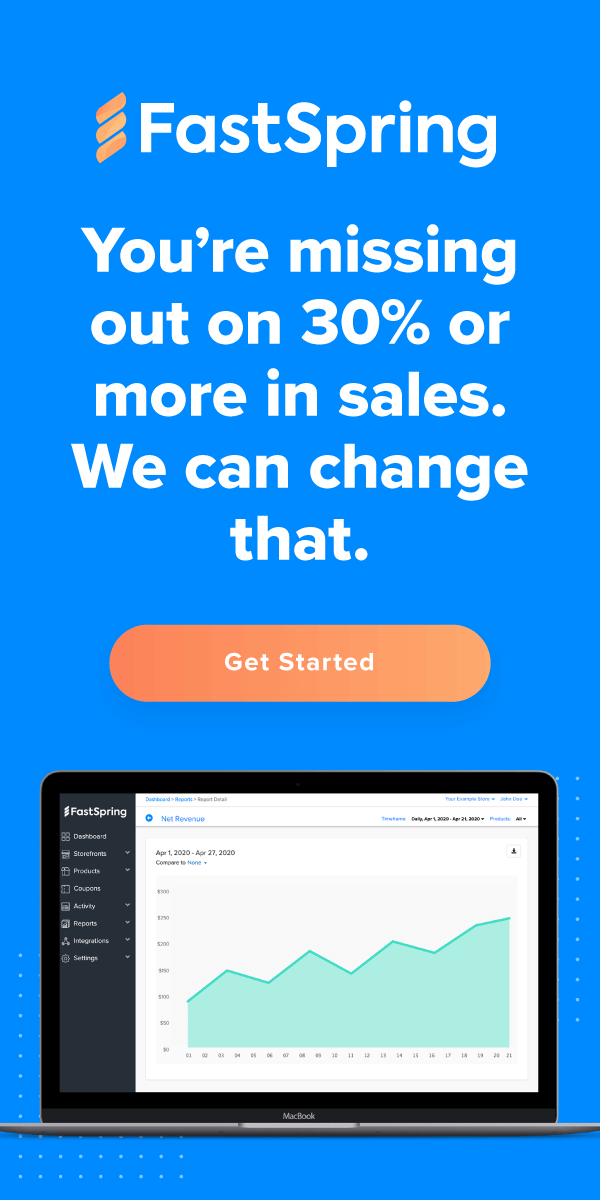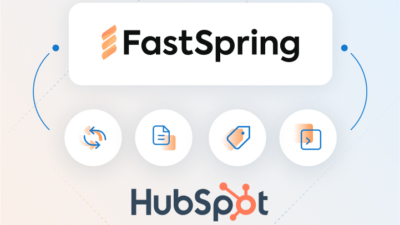We all dream of the day we close an enterprise deal fast with one of the ‘big guys’ (companies like Salesforce and Hubspot).
To get there, you have to be able to sell to them.
Welcome to the big leagues:
Learning to close enterprise deals faster.
What makes closing enterprise deals faster, harder?

An enterprise is a large corporation, and with a larger company comes a tougher challenge. Here are a couple of the things you can expect:
- Having to deal with multiple stakeholders throughout the sales cycle. There will often be multiple no matter the size of the deal, but with enterprise comes countless other stakeholders – since you’re dealing with much larger companies. All of these people will have different objectives and things they want to accomplish – and you’re tasked with pleasing all of them.
- Integrating your product with numerous other systems and processes. Large companies have rigid structures and you need a plan for implementing your solution within the client company.
- A much longer (and convoluted) legal process.The final contract has to be approved by your client, their lawyer, you, and your lawyer (not to mention the time it takes to draw up the contract in the first place).
If you have the opportunity to close an enterprise deal, make sure you know what you’re getting into. If you don’t have the resources to support a large company, the process will be that much more difficult (and may end up being wasted time if the deal falls through).
It’s always a long ordeal (closing an enterprise deal takes anywhere from 6 months to 2 years, not exactly fast), so I’ve written out some steps to help you close enterprise deals faster.
7 Steps To Close Enterprise Deals Faster
1. Keep Your Mindset Realistic.
You have to recognize the differences in perspective.
A startup wants to shift the status quo (in order to find a gap where they can profit from). While enterprises (essentially) built the status quo and are more on the side of maintaining it since it’s what generates revenue for them.
From the beginning of your relationship, you should be open and transparent with your prospect. Establishing a variation of an upfront contract is something that can get you both on the same page.
By variation, I mean an upfront contract that spans further than the first meeting. You want to gauge what you expect of each other throughout the sales process. Asking a question like “What does your process usually look like when searching for a solution to a problem?” and explaining how you usually deal with prospects are key to ensuring you both know what you’re looking to obtain out of a potential relationship/deal.
If both parties can recognize the other’s perspective, you can work towards a common goal more efficiently and fairly.
2. Research. Research. Research.
Know your industry, and more importantly, know the prospect.
Know the prospect better than they know themselves. Learning about the company in advance allows you to be on the same page from the beginning, and also may lead to some opportunity.
Finding the ‘pain points’ is a key goal of your research. The enterprise likely has one overarching issue you want to solve, but if you can find numerous areas in which your product can help, your value skyrockets.
Here are a couple of good places to look for more information on your prospect:
- Job boards like Indeed, LinkedIn, and Glassdoor. Search to see if your prospect is looking for any particular positions to gather insight into what they may be lacking in or struggling with.
- Their blog. If they have a blog and if they regularly update it, skim through the posts to see if there are any written by the person you have been in contact with. This can give you a good grasp of what the prospect really cares about, especially if they took the time to write about it.
- Podcasts that your prospect was a guest on. These are less frequent when dealing with smaller sized businesses, but when you can find one, it can prove to be greatly beneficial. Podcast interviews often offer a deep dive into the prospect’s business, and you hear it straight from them, without the editing that comes with a blog post.
On top of this, to stay informed on your industry news, you should be setting aside time each day to read publications relevant to your field of work. If it’s SaaS, blogs like Sales Hacker and Predictable Revenue are valuable resources for any business.
3. Find your Champion.
A champion is an employee (within the prospect enterprise organization) who takes interest in your product and pushes for it to be adopted from within.
In order to find one, you need to reach into your network. Finding anyone who works, has worked, or has connections to the organization is key for your credibility.
One other way to find a champion is to ask the people you’re pitching to if you can talk with other people within their team or across the company. This way you can find more pain points and potentially find someone who strongly believes in your solution – enough to be your champion.
Also, if you have the opportunity for more than one champion (ex. a team within the enterprise is all on board with your product) that’s even better! Having more than one champion gives you more positive voices pushing for the implementation of your product. Plus, it limits the severity of the fallout if your product doesn’t end up working out.
4. Don’t Pitch, Understand
Sure, you want to sell them your product, but you also want to ensure your option is viable for their needs – so you’re not wasting anyone’s time.
In your first call or meeting with the enterprise, you should be the one listening and asking questions.
CEO of Close Steli Efti says you should treat your first meeting as if you are a doctor and your prospect is a patient.
Let’s say you went to the doctor’s office for an appointment and the doctor started the meeting by listing off all of their credentials and what they specialize in, how would you feel?
What if you went in and the doctor started to perform surgery on you?
You probably wouldn’t feel very good in either of these situations, because the doctor doesn’t know what is troubling you.
As a salesperson, you must take the time to understand your client’s needs and refrain from throwing a solution in their face. Let them tell you what’s wrong/not working.
5. Find the Pain Points
Maybe the most important step on the list, finding what causes your prospect issues is essential to selling your product to them.
In fact, this may not be a step at all. It’s actually something you should be doing throughout each step along the way.
Open-ended questions like, “What is your biggest problem right now?” and “Why haven’t you addressed this issue?” can help lead you into a deeper conversation about their struggles.
These aren’t just questions for high-level executives. It’s important to ask all stakeholders and employees you interact with, as it can bring you tons of different information to help you present the best solution possible.
Your goal is to sell them a product that fixes their problems. Whether you find those problems through preliminary research, your champion, or by any other way, it doesn’t matter. The important thing is that you find them.
6. Stand Up for Yourself
Remember, an enterprise to a start-up is like what a king is to a jester. They have all of the leverage and you need them a lot more than they need you…
That said, they’re interested for a reason. You’re going to get pushed around at times (asks for more features, discounts, etc.), but you have to hold strong on some things too.
You don’t want to fall into the habit of offering a discount just to win business.
SaaS companies may win in the short term for being the cheapest solution, but if they do not offer value to their customers, they will soon fall short of expectations. For clients, getting sufficient value is worth far more than saving a few dollars every month.
When the enterprise prospect makes the ask for a discount, it’s important to reiterate the value you bring to them by showing them what you offer as opposed to other alternatives.
Before they have the chance to ask for a discount, presenting them with a well-researched pricing guide can make all the difference in legitimizing your value proposition.

FastSpring Interactive Quotes allows you to specifically break down your packages all in one place in an interactive guide. This not only gives the prospect a document of the services you are offering, but it also provides the reasoning behind the prices you have chosen.
On top of using FastSpring Interactive Quotes, presenting them with real case studies of other companies who have successfully used your product is also key to reinforcing the value you bring to the table.
Schedule a demo of FastSpring Interactive Quotes today!
7. Signing the Dotted Line Doesn’t Mean the Work is Over
Closing an enterprise deal only means more opportunity for further growth. You’ve got street cred! Now that you’ve signed a large enterprise deal, other enterprises will look to you as well.
As for your newly signed client, now comes more research on your part, anticipating industry changes and being a strong base for your client to come to for help.

If you want your client to continue using the product, you have to be available to them and ensure they are satisfied – or else they won’t be upgrading or buying again anytime soon. This is where customer success teams/people come into play. Generally, these people will ensure new sign-ups are properly supported, gain feedback, identify customers that may be at risk of cancelling their subscription, and everything in-between.
Here are a couple of customer success strategies to help retain enterprise customers:
- Executive Check-Ins: Schedule quarterly meetings with a company executive to go over what’s working, if the product is being used properly, and if they’re seeing results. This will help you make necessary changes quickly and make stronger connections with the company.
- Workshops: Offer workshop training to the employees who will be using your product. Doing so will ensure the company is maximizing the features your product provides.
- Be consistent: Being a place for the enterprise to rely on when they need you is essential to building a strong relationship, and retaining the customer in the future.
On top of these, if you were able to lock down a champion, they put their neck out for you and you owe them big time.
The best way to repay them is to advance their career through the successfulness of your product. If you put in the time to ensure your product fixes the problems it was meant to fix, your champion will be known as the person who found the solution and will thus be rewarded for its success.
In closing…
Closing enterprise deals faster doesn’t happen over night. They tend to be a long, grueling, drawn-out process.
Are they worth it?
You may believe that since enterprise deals are typically valued at upwards of 6+ figures, that automatically makes it worth it.
But it doesn’t matter how much the deal is worth if you lose money in the process.
Ensuring your product will be successful and building trust with your new client is essential to making an enterprise deal ‘worth it’. If you can retain an enterprise client, you gain an abundance of industry credibility and this goes a long way to securing other enterprise clients.
This said, the steps in this article are designed to do just that – close an enterprise deal faster and retain the client.
Your enterprise awaits.
![[Customer Story] Why TestDome Considers FastSpring a Real Partner](https://fastspring.com/wp-content/themes/fastspring-bamboo/images/promotional/2023/FastSpring-TestDome-blog-thumbnail.jpg)








